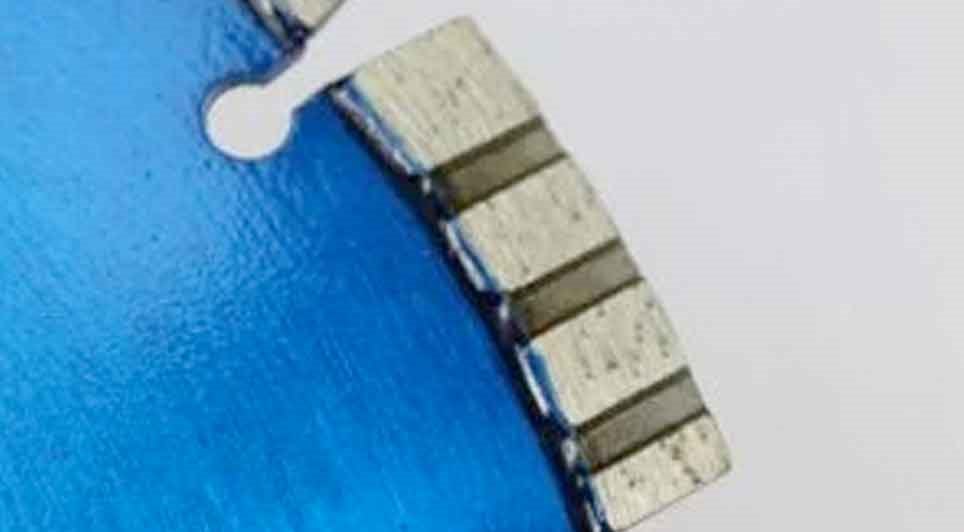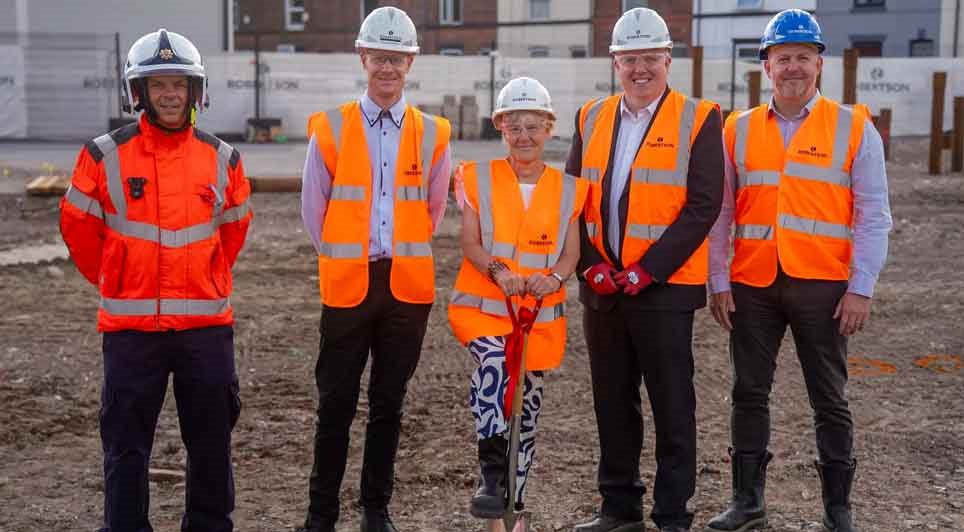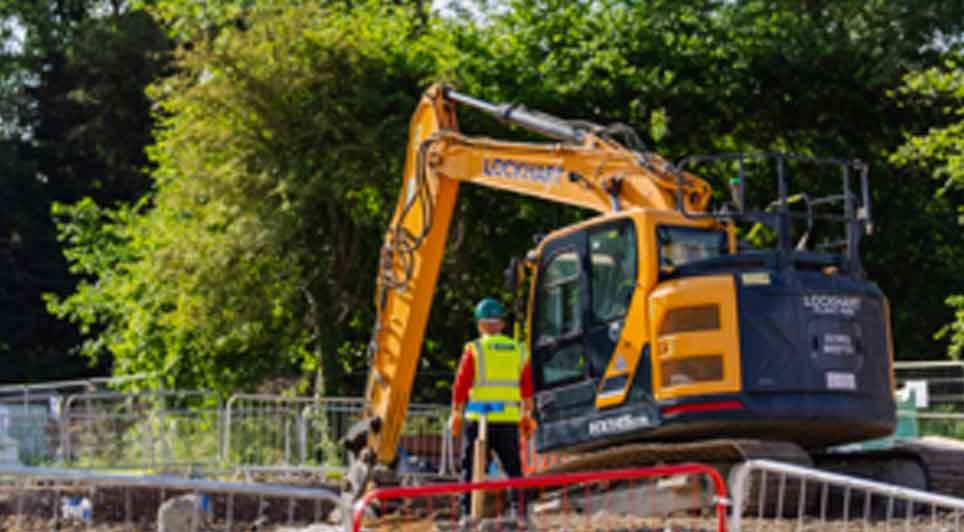Castle & Pryor use diamond blades for cutting because they are cost effective, accurate, and safe.
Diamond tipped blades can be used on a variety of tooling including floor saws, track/wall saws, and hand cutters making them very versatile to meet the everyday requirements of the construction industry. The advantages of diamond cutting cementitious construction materials are many faceted in respect you can cut accurately, free of dust and vibration, by hand or using specialist machinery to suit the task at hand.
Large or small sections of concrete or masonry can be isolated or removed in situ without disturbing the remaining structure making modification or refurbishments works easier to carry out. All sections can be cut to size to accommodate weight restrictions or size to suit site ergonomics upon removal.
What are the benefits of using diamond blades?
Cost Efficiency: Although initially expensive, the longevity of diamond tools offsets the need for frequent replacements, saving costs over time.
Faster Cutting Speeds: The strength of diamonds allows for faster material removal, improving productivity in time-sensitive projects.
Minimal Downtime: The durability and sharpness of diamond tools reduce the frequency of tool changes.
Low Heat Buildup: Diamond tools can withstand high temperatures without losing their cutting edge, making them suitable for prolonged use in demanding conditions.
Low Vibration and Noise: These tools reduce vibrations and noise levels.
Less Waste: Precision cutting results in minimal material wastage.
Efficient Resource Use: Reduced material waste and the long lifespan of diamond tools contribute to a more sustainable operation.
Reliability: Their ability to handle tough materials makes them indispensable for demolition, roadwork, and structural projects.
Clean Cuts: Diamond cutting tools ensure straight, precise, and clean cuts, reducing the need for secondary adjustments or repairs.
How do diamond blades work?
Diamond blades don't technically "cut" materials, they grind through them. The embedded diamond particles induce a shearing effect which progressively wears material off.
How are diamond blades made?
Diamond saw blades are made using a specialist process that combines synthetic diamonds with a metal or resin bond to create a strong and powerful blade. The synthetic diamond crystals are stronger than natural diamonds.
The diamond particles are then exposed on the edge of the blade to cut through materials. The cut is essentially achieved thanks to the exposed diamonds on the edge of the blade slicing through the stone.
How has the manufacturing of diamond cutting blades evolved over the past 20 years?
Diamond Retention: The metal or resin bond matrix has been refined to provide better retention of diamonds, leading to longer blade life and more efficient use of diamond particles.
Higher-quality synthetic diamonds: The use of higher-grade synthetic diamonds has improved blade durability and cutting precision. Modern synthetic diamonds are engineered to have consistent shape, size, and toughness.
Micro-diamond technology: Finer diamond particles are now used in combination with coarse particles, optimising the balance between speed and precision in cutting applications.
Nanodiamonds: The integration of nanodiamonds into the bonding matrix improves cutting performance by increasing wear resistance and heat dissipation.
Auto Array: An Auto Array arranges diamond particles within the blade’s bonding matrix in a highly organised and precise manner, rather than relying on the traditional random distribution of diamonds. This innovation improves the blade’s performance, efficiency, and lifespan.
Precise Diamond Placement:
Diamonds are systematically arranged in layers or patterns within the segment to maximise cutting efficiency. These patterns are designed to ensure that:
The diamonds are uniformly distributed.
Each diamond contributes to the cutting process, minimising waste.
Cutting performance remains consistent over time as the blade wears.
Metal Bond Engineering:
Auto Array blades use advanced bonding techniques to secure the diamonds in place. These bonds are formulated to wear down at a rate that keeps fresh diamonds exposed throughout the blade's use.
Segment design: Blade segments are now designed with a range of patterns (e.g., turbo, segmented, and continuous rim designs) tailored to specific cutting needs. These designs improve debris removal, cooling, and cutting efficiency.
Cooling holes and slots: Modern blades feature precision-engineered cooling holes or slots in the steel core to enhance heat dissipation and reduce the risk of warping during heavy use.
Noise reduction: Anti-vibration cores and specialised designs reduce noise and vibration during cutting, improving safety and operator comfort.
Computerised Manufacturing: Automated systems, such as laser-guided or robotic processes, precisely position diamonds during the production of the segments. This level of precision is unattainable through traditional methods.
Material-specific blades: Manufacturers now offer a wide variety of blades tailored for cutting specific materials like concrete, asphalt, stone, ceramic, and metal. These blades are optimised for the hardness and abrasiveness of the target material.
Recycling of diamonds: Old blades are increasingly recycled to recover diamond particles, reducing waste and environmental impact.
What are the benefits of the innovations to diamond blades?
Longer blade life: Innovations in bonding materials and segment designs have significantly increased the lifespan of diamond blades.
Faster cutting speeds: Improved segment geometry and diamond grit distribution enhance the speed of cutting without compromising quality.
Thermal resistance: Advances in heat-resistant bonding materials and cooling systems have improved the blade's ability to perform under high temperatures.
What is a blade doctor?
A Diamond Blade Doctor ensures that diamond blades perform at their best while saving costs by extending their lifespan through proper maintenance and expert care. They are skilled at:
Segment Replacement: Replacing worn-out or damaged segments with new ones to restore cutting performance.
Core Straightening: Fixing warped or bent steel cores to extend the blade’s usable life.
Glazing Removal: Restoring cutting efficiency by removing glazed layers and exposing fresh diamond particles through grinding or dressing.
Re-tipping: Adding new diamond tips to segments that have been excessively worn down.
Summary
The production of diamond saw blades involves careful selection of materials, precision engineering, and stringent quality control. The result is a highly durable cutting tool capable of delivering precision and efficiency across a wide range of materials and applications, which is why Castle & Pryor choose to use Diamond Cutting Blades.
Need a price for your project? Speak to one of our team. Call 0800 163 382.
castle-pryor.co.uk
Construction News
12/03/2025
Why Do Castle & Pryor Use Diamond Blades For Cutting?


02/07/2025
Construction is officially underway on the new Whitefield Community Fire Station, part of Greater Manchester Fire and Rescue Service's (GMFRS) £38 million Estates Improvement Programme.
Led by Robertson Construction North West, the project will replace the former fire station on Bury New Road with

02/07/2025
Hull City Council has officially appointed Esh Construction to lead a major repair and strengthening programme on Drypool Bridge, one of the city's key transport links.
The project will be delivered in partnership with engineering consultancy Mason Clark Associates.
Work will begin on the south s

02/07/2025
Award-winning housebuilder The Hill Group has announced record financial results for the year ending 31 March 2025, marking its second consecutive year of historic growth.
The company reported a turnover of £1.15 billion and a pre-tax profit of £90.5 million, completing more than 2,800 new homes a

02/07/2025
Women in Construction Anglia (WICA) and Suffolk Chamber of Commerce have voiced strong support for the government's new plans to increase the construction workforce by 100,000 people annually.
The announcement follows the launch of the first Construction Skills Mission Board, attended by Work and P

02/07/2025
Huddersfield Station will undergo a significant upgrade this autumn as part of the multi-billion-pound Transpennine Route Upgrade (TRU), with a full 30-day closure scheduled from Saturday 30 August to Sunday 28 September 2025.
The closure represents a major milestone in the delivery of a faster, gr

02/07/2025
Procurement Hub, part of Places for People (PfP), has confirmed a two-year extension of its flagship Major Projects Framework 2 (MPF2), extending its term until 2028 after achieving more than £300 million in social value since its launch in 2022.
Designed to deliver a more efficient, equitable, and

02/07/2025
Two Galliford Try employees have received commendations at this year's British Ex-Forces in Business Awards, recognising their outstanding contributions and leadership within the construction industry after transitioning from military service.
Pam McNeill, Business Assurance Manager for Galliford T

02/07/2025
The government has announced a landmark £39 billion investment to deliver around 300,000 new social and affordable homes across the UK over the next decade, in a major bid to tackle the housing crisis and provide secure housing for families and children stuck in temporary accommodation.
Under the n

02/07/2025
Hydrogen sulfide (H₂S) is one of the most dangerous gases found in industrial environments.
Colourless, highly toxic, and often referred to as the "silent killer", it's particularly hazardous because it can quickly deaden the sense of smell, giving workers a false sense of security.
Even a

02/07/2025
The Federation of Master Builders (FMB) has welcomed the Construction Leadership Council's (CLC) new Health, Safety and Wellbeing Strategy, describing it as a much-needed step toward driving change across the construction industry.
FMB Chief Executive Brian Berry joined over 140 industry leaders at
 UK
UK Ireland
Ireland Scotland
Scotland London
London











